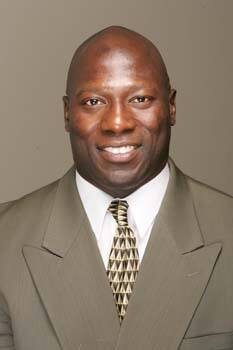 By Rhadi Ferguson
By Rhadi Ferguson
When I started in the strength and conditioning profession I remember attending seminars, workshops and courses. And the one portion of all of these learning experiences which really resonated with me was the legal portion.
I paid very close attention to this because, as many of you know, we live in a very litigious society and the last thing that any of us wants it to get sued. I can recall one instructor who taught me a very valuable lesson which I'm going to share with you today.
He called it the C.Y.A. rule. And C.Y.A. means "cover your assets."
He told us a story of how this one trainer was training a client and the client got hurt and the client tried to sue the trainer. But when they went to court, the trainer had EVERY session documented with exercises, weights, numbers, and progressions. And he clearly illustrated to the judge and jury that the injury sustained by his client was a pure accident and that he did everything appropriately to ensure his clients safety.
Now why is that important?
Well, Lord forbid that any of you ever gets sued or has a student who seriously injures themselves under your care. But if an accident happens (and they are called accidents because they weren't planned or foreseen) then you need to make sure that you have a couple of things in place.
1. Insurance
2. Documentation
I'm not going to cover the insurance issue, that's separate and something that you should surely have if you teach. I have it when I instruct through my strength and conditioning organization and you should have it as well.
You should also have clear documentation of your curriculum and how each lesson builds upon the next so that if any ever happens you can clearly show that the students were prepared, they have been conditioned trained and were ready for the next order of progression.
For example:
Before teaching your students drop seionage, you should clearly explain and it should be documented that you covered:
(1) Forward rolls
(2) Break falls
(3) Standing seionage
(4) The caveats of drop seionage
(5) The appropriate way to throw drop seoinage
(6) The appropriate way to get thrown in practice with drop seionage
(7) The defense
(8) The reason why it is important for uke to tuck their chin during drop seionage practice
(9) Etc....
This documentation, although cumbersome, will save you time during your future instruction of future students and will save you headaches in the future.
Just think about how pleasant it would be for you if a parent came into your school and asked you what you were teaching today, and you could simply open up your notebook and/or 3-ring binder and show them.
You'll have parents in the community singing your praises in no time. You'll also be covering your "assets". And you'll be on your way to develop and running a sound judo club.
Remember, in order for your students to learn, YOU have to teach. If you have any questions on curriculum development or if you would like more information on how you can better instruct your students you can email me at judoinstruction@aweber.com.
Rhadi Ferguson is a 2004 Olympian and a four-time National Champion in the sport of judo. He is also a World Class Strength and Conditioning Coach and has trained world class Mixed Martial Artists,Olympians, NFL Players and Track and Field athletes. You may visit his website at www.thekingofstrengthandconditioning.com and pick up a Free Report and mp3 files on Coaching Success Secrets